Business
My European Favourites – Day Trip From Amsterdam

The Netherlands is a great place to visit either as a main destination or as a stopover for a couple of days. I have always enjoyed flying KLM and use them often for our many groups travelling throughout Europe. Amsterdam’s Schiphol Airport is an east hub to fly into from North America, and I like the airport layout over other big and busy European airports.
Amsterdam itself has many interesting places to visit and explore. The city is full of history, great architecture, canals, bridges, museums, great shopping, cyclists, interesting cafes, the Anne Frank House, the Heineken Brewery, and yes, the notorious red light district. Not many people venture outside the city during a stopover, but one of our favourite day trips is from Amsterdam. We always try to do it on a Wednesday, so we catch the Edam cheese market show.

De Huisman Windmill exterior and interior grinding spices. Clog machine at work and the final products.
Zaanse Schans
Our twenty minute early morning trip to Zaandam starts after a good breakfast at our centrally located hotel in Amsterdam. On the way, you can enjoy the beautiful Dutch countryside including dikes and plots of land reclaimed from the water, called polders. Starting in the late 16th century, the Zaandam and the Zaan river area were important wood milling regions during the “Dutch Golden Age” with thousands of saw windmills. In the 19th century, the area became a leader of the “Industrial Age” in the Netherlands.
Starting in 1961, the Zaanse Schans was turned into an open air museum with windmills and buildings from the 18th and 19th centuries. Various wooden houses, barns, shops, warehouses and windmills were transported here starting in 1961. The buildings along with traditional farmsteads, paths, ditches and fields depict how village life was like during that prosperous time.
When we arrive at the Zaanse Schans parking lot, you will undoubtably smell chocolate from the nearby cacao processing factories. Entrance to the Zaansee Schans is free, but some of the workshops and windmills located throughout the grounds are museums and require an entrance fee. You can purchase a ticket to have access to all the museums.
One of the first buildings you will see on arrival is the Kooijman Souvenirs & Clogs Wooden Shoe Workshop. Here you can see a wooden clog machine demonstration. Afterwards, wander throughout the site checking out the bakery, fisherman’s house, weavers house, clock house, merchant house, cheese house, pewter house, pancake house and see how vats and barrels are made at the cooperage. With a little breeze, you can see the sails of the windmills slowly turning while the inner workings churn away. The windmills saw wood or mill oil, flower, spices or pigments to dye cloth. Some windmills allow visitors to climb up to the deck via narrow stairs for a nice view of the river and the area.
The Zaans Museum, located by the parking area, opened in 1998, and contains clothing and artifacts from the area. At its Verkade Experience you can see original chocolate and biscuit factory machines from the early 20th century at work. The museum also has a café and shop.

Traditional houses that are now workshops and museums. Like the Catharina Hoeve Cheese House.
Edam
Another short 20 minute drive, and we reach Edam, which is famous for its cheese market that started in1520. Edam cheese is round with a flattened top and bottom and is coated with a red paraffin wax which allowed it to age well and not spoil on long voyages. Its unique taste plus the lack of spoilage made it extremely attractive for exporting throughout the world. The market was closed in 1922 when cheese began to be made in factories rather than by local farms.
At the original market, farmers would bring their cheese using horse drawn cart or by boat. Once they arrived, the cheese carriers, who wore different colored hats depending on which cheese guild they belonged to, would load the product onto wooden barrows. Once the barrow was loaded, the carriers placed carry straps over their shoulders and walked the precious cargo to the cheese tasters. The tasters would drill a core sample from the cheese and based on the exterior wax, smell, taste and other factors began to bargain the price with the seller using a series of shouts and hand claps. When the price was settled the cheese was taken to the weighing house to determine the final amount to be paid.
Every Wednesday in the summer from 10:30 to 12:30, the town re-enacts the hustle, and bustle of the market at the Jan van Nieuwenhuizen Square. The colorful market includes many family members, including children, wearing traditional costumes, dresses and clogs plus kiosks selling cheese. Throughout the performance, horse carts and boats arrive, cheese carriers scurry at a comical pace and bargain shouts and hand slaps can be heard. So visitors understand everything that is happening, there is a person on a microphone explaining the entire process. It’s quite interesting and fun to witness.

The Edam cheese market square, unloading the boats, cheese carriers and girls in traditional costumes.
Smoked Eels
Next, we will travel from Edam to the seaside fishing village of Volendam to visit a local smokehouse that was founded in 1856. Smoked eels at one time were an important staple food in the Netherlands but recently a drop in the eel population and the resulting price increase has made it a delicacy. Today, the 5th and 6th generations of the Smits’ family keep their family’s secret fish smoking process and traditions alive. The smoked eel is their specialty and during the eel fishing season the entire family is involved in the cutting, gouging, skinning, digging and filleting of the eels. The Paviljoen Smit-Bokkum offers private tours of the smokehouse to introduce people to the traditional eel fishing, processing and smoking activities. In addition to eel, they smoke salmon, dorado and sea bass using pine wood. The eel is delicious and at their restaurant you can try various local dishes. The location also has a shop and a small Palingsound (eel sound) Museum dedicated to Volendam’s unique and famous pop music.

The Paviljoen Smit-Bokkum, our guide with smoked eels, smoked fish and a fish display in Volendam.
Volendam
Volendam, once a simple catholic fishing village, is now Holland’s best-known seaside town and is visited by millions annually. The Volendam Catholic fishermen had their own typical costumes and dialect. The town’s boardwalk, once home to fishermen’s wooden shacks, is now adorned with colorful wooden houses, tourist shops, cafes and restaurants. As you walk through the town and its shops, you will see locals wearing the traditional clothing. If you explore the village’s narrow lanes in the old neighborhoods, you can still see some of the old fishermens’ houses.
There used to be hundreds of vessels at one time when Volendam’s fishing fleet had access to the North Sea, but after closing its access, the harbour contains only a few fishing vessels doing fresh water fishing on Markermeer lake. Nowadays, leisure boats and the ferries that go to the nearby island of Marken occupy the majority of the harbour space.
Some restaurants offer tasty local seafood dishes and cool drinks on patios overlooking the harbour. For a quick lunch, food stands and take away restaurants sell kibbeling (battered and fried fish nuggets), herring, shrimp and of course smoked eel.
A visit to the Volendams Museum provides an interesting look into the town’s history, costumes, traditions and art. If you have time, you may consider taking the Volendam Marken Express boat to Marken.

Volendam’s boardwalk with shops and restaurants. The harbour area with leisure and ferry boats.
Cheese Farm
On the way back to Amsterdam, and a short distance from Volendam, we will stop at the Henri Willig Jacob’s Hoeve cheese farm. The staff wear traditional clothing, and they give a short introduction and demonstration of the cheese making process. The number of cow goat and sheep cheese varieties is quite overwhelming but very interesting to sample. Some flavours you might encounter include truffle, cumin, pesto, red chili pepper, coconut, pepper, rosemary and garlic. They are all for sale in various sizes along with other Dutch souvenirs and foods. You can also see the cows in their new stable especially designed for the organic farm’s herd of Jerseys.

Henri Willig Jacob’s Hoeve entrance, the cheese making demonstration and the many cheeses for sale.
It is only twenty minutes back to Amsterdam and as you enjoy the countryside you can decide on what great restaurant you will go to tonight. I think an authentic Indonesian “rijsttafel” or rice table would be a great way to end the day. The rice table was brought back to the Netherlands from the Dutch East Indies where it was created by the Dutch as a festive way to showcase their colony’s diverse and multi-ethnic Indonesian cuisine. The rice is accompanied by a multitude of small meat, vegetarian and condiment dishes that may include spring rolls, satay meat skewers, curries, fish, boiled eggs, spicy sauces, peanut sauces, vegetables, and fried bananas. It is great for sampling different tastes and for sharing. You can find Indonesian fast food and restaurants throughout Amsterdam, but a place like Tujuh Maret or Ron Gastrobar Indonesia offering a rice table is definitely something you should experience.
Explore Europe With Us
Azorcan Global Sport, School and Sightseeing Tours have taken thousands to Europe on their custom group tours since 1994. Visit azorcan.net to see all our custom tour possibilities for your group of 26 or more. Individuals can join our “open” signature sport, sightseeing and sport fan tours including our popular Canada hockey fan tours to the World Juniors. At azorcan.net/media you can read our newsletters and listen to our podcasts.
Images compliments of Paul Almeida and Azorcan Tours. This article was original published in March 2021.
Business
The Liberal budget is a massive FAILURE: Former Liberal Cabinet Member Dan McTeague
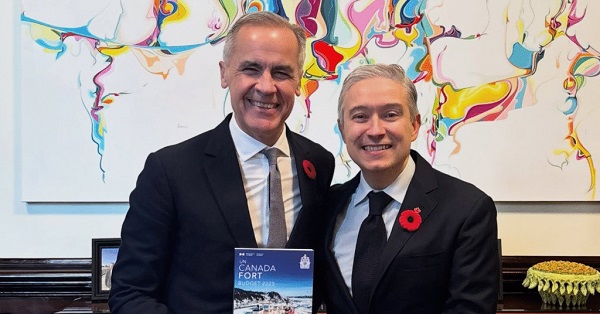
Prime Minister Mark Carney tabled his government’s long-overdue budget yesterday and took the same approach as his predecessor – spend, spend, spend.
Canada’s deficit is now a staggering $78 BILLION. To make matters worse, Carney doubled down on the industrial carbon tax.
Dan McTeague explains in his latest video.
Business
Pulling back the curtain on the Carney government’s first budget
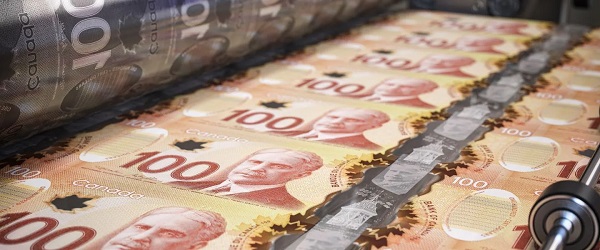
From the Fraser Institute
By Jake Fuss and Grady Munro
The Carney government will spend more, run larger deficits and accumulate more debt than was previously planned by the Trudeau government.
In the 1939 film the Wizard of Oz, Dorothy and her companions travel to the Emerald City to meet the famous Wizard of Oz who will solve all their problems. When first entering the Wizard’s chambers, the group sees a giant ghostly head that meets their expectations of the “Great and Powerful Oz.” However, later on in the film (much to their disappointment) we learn that the Wizard is nothing more than an ordinary man operating a machine behind a curtain.
Canadians might feel a similar kind of disappointment about the Carney government’s first budget tabled on Tuesday. Prime Minister Carney promised a “very different approach” than that of his predecessor regarding Ottawa’s finances, and at first glance the budget appears to be this new approach. But when you pull back the curtain, it’s simply an escalation of the same failed fiscal policies Canadians have suffered for the last decade.
For context, the Trudeau government’s approach to government finances was record-high levels of spending, persistent deficits and massive debt accumulation. The Trudeau government created a fiscal mess, and as a “responsible fiscal manager” the Carney government has promised to clean it up.
To that end, the Carney government now separates spending into two categories: “operating spending” and “capital investment.” Capital investment includes any spending or tax expenditure (e.g. tax credits and deductions) that contribute to the production of an asset (e.g. infrastructure, machinery or equipment). Operating spending includes everything else, and is supposed to represent “day-to-day” government spending.
The government plans to balance the “operating budget”—meaning it will match operating spending to revenue—by 2028/29, while leaving capital investments to be financed through borrowing. Importantly, when calculating the operating balance, the government counts revenues that are foregone due to tax expenditures that are considered to be capital investments.
To help find the savings needed to balance its operating budget by 2028/29, the government initiated a “Comprehensive Expenditure Review” this past summer—the budget reveals the review’s results. Part of the review included a long overdue reduction in the size of the federal public service, as the government will cut 16,000 positions this year, and reach a total reduction of almost 40,000 by 2028/29 compared to levels seen two years ago. As a result of this spending review, the budget projects spending in 2028/29 will be $12.8 billion lower than it otherwise would have been.
This is the fiscal picture the Carney government is focusing on, and the one it undoubtedly wants Canadians to focus on, too. When taken at face value, balancing the operating budget, initiating a spending review, cutting the federal bureaucracy, and focusing on greater investment would certainly appear to be a different approach than the Trudeau government—which made no meaningful effort to balance the budget or restrain spending during its tenure, grew the bureaucracy, and allowed business investment to collapse under its watch.
But here’s the problem. When you pull back the curtain, all the rhetoric and accounting changes are just a way to obscure the fact the Carney government will spend more, run larger deficits and accumulate more debt than was previously planned by the Trudeau government.
Both operating spending and capital investment (which represents either additional spending or foregone revenue) impact the bottom line, and by separating the two the Carney government is simply obscuring the true state of Ottawa’s finances. If we ignore the government’s sleight of hand and instead compare total government spending against the revenues that are actually collected, the true size of the budget deficit this year is expected to equal $78.3 billion. Not only is that considerably more than the “operating” deficit the government is focusing on, it’s also nearly double the $42.2 billion deficit that was originally planned by the Trudeau government.
The story is similar for years to come. While the Carney government claims it will balance the operating budget by 2028/29, the overall deficit will be $57.9 billion that year. Over the four years from 2025/26 to 2028/29, overall deficits under the Carney government will equal a combined $265.1 billion. In comparison, the Trudeau government had only planned to run deficits equaling a combined $131.4 billion during those same four years—meaning the Carney government plans to borrow more than twice as much as the Trudeau government.
Driving this increase in borrowing is a combination of lower revenues and higher spending. From 2025/26 to 2028/29, the Carney government expects to collect $70.5 billion fewer revenues than the Trudeau government had previously projected. This difference likely comes down to a combination of the economic impact of U.S. tariffs along with various tax measures implemented by the Carney government that lower revenues (including cancelling a proposed increase to capital gains taxes and cutting the bottom federal personal income tax rate).
On the flip side, the Carney government plans to spend $63.4 billion more in total than the Trudeau government due to the introduction of considerable new spending commitments (notably on defence and housing), and the expectation of higher interest payments on its debt. The reality that spending is only set to rise under the Carney government stands in stark contrast to the prime minister’s rhetoric regarding “austerity” and the “ambitious savings” found by the government’s so-called spending review.
Higher spending and larger deficits will help grow the mountain of federal debt. By 2028/29, the Trudeau government had originally projected that total government debt would reach $2.6 trillion—which, based on the budget forecasts, would represent 72.2 per cent of the overall economy. The Carney government’s fiscal plan now puts total federal debt at $2.8 trillion by 2028/29, or 78.6 per cent of the overall economy. For perspective, the last time total federal debt pushed 80 per cent of the economy was during the 1990s when Canada teetered on the brink of a fiscal crisis.
Finally, the government’s approach to spending and the deficit doesn’t seem to be in line with what Canadians wanted to see from this budget. A poll conducted prior to the budget showed that 69 per cent of respondents felt it’s important for the government to balance the budget, compared to just 27 per cent who supported continued deficit spending. In fact, three out of five respondents felt that too much government spending has contributed to the rising cost of living and inflation—the issue they’re most concerned about.
Like a certain Wizard, Prime Minister Carney has made grand promises to fix many of the serious problems facing Canada. At first glance, the Carney government’s first budget may appear to deliver a new plan that will get federal finances back in order. Just pay no attention to the man behind the curtain.
-

 Brownstone Institute2 days ago
Brownstone Institute2 days agoBizarre Decisions about Nicotine Pouches Lead to the Wrong Products on Shelves
-

 Agriculture1 day ago
Agriculture1 day agoDanish Cows Collapsing Under Mandatory Methane-Reducing Additive
-

 Alberta1 day ago
Alberta1 day agoAlberta government’s plan will improve access to MRIs and CT scans
-
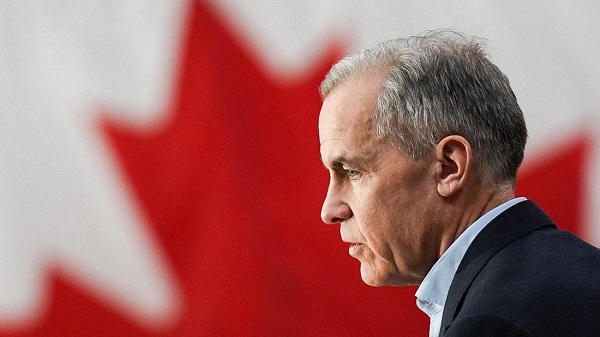
 Business2 days ago
Business2 days agoCarney government’s first budget should signal end to crippling ‘climate’ policies
-

 Business2 days ago
Business2 days agoTrump’s Tariffs Have Not Caused Economy To Collapse
-

 Health2 days ago
Health2 days agoRFK Jr’s argument for studying efficacy of various vaccines
-
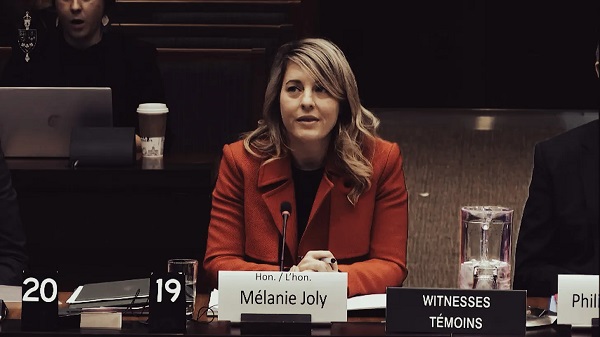
 Business1 day ago
Business1 day agoNo Jobs Clause: Liberals Under Fire Over Stellantis Deal in Fiery Committee Showdown
-
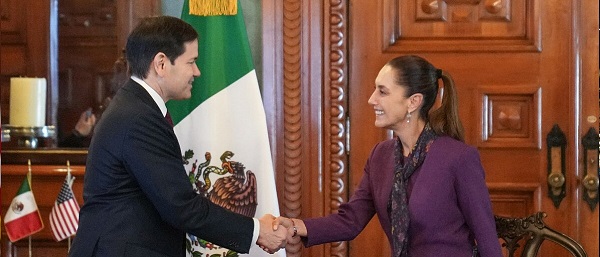
 Daily Caller2 days ago
Daily Caller2 days agoTrump Reportedly Planning Ground Troops, Drone Strikes On Cartels In Mexico












